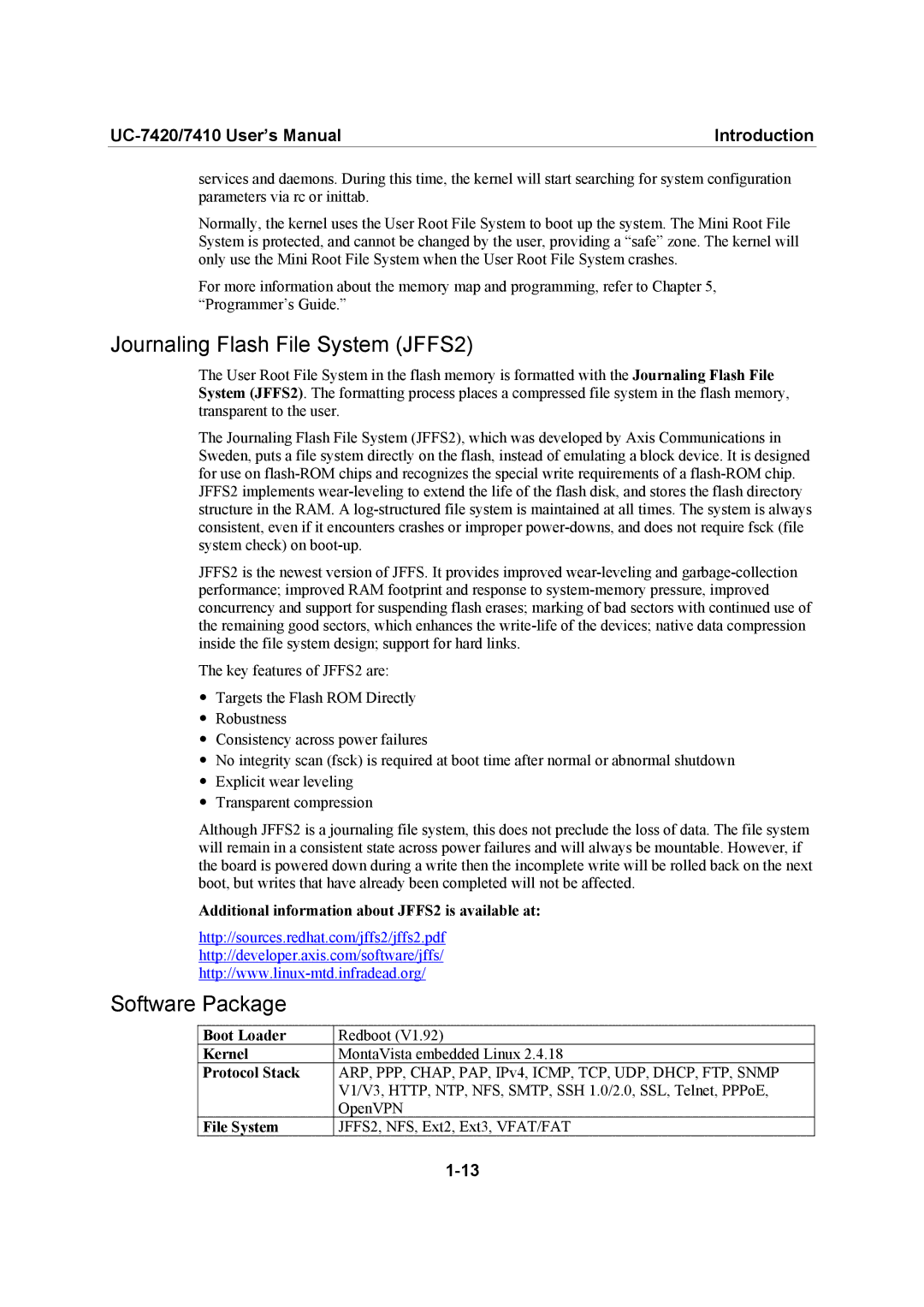Introduction |
services and daemons. During this time, the kernel will start searching for system configuration parameters via rc or inittab.
Normally, the kernel uses the User Root File System to boot up the system. The Mini Root File System is protected, and cannot be changed by the user, providing a “safe” zone. The kernel will only use the Mini Root File System when the User Root File System crashes.
For more information about the memory map and programming, refer to Chapter 5, “Programmer’s Guide.”
Journaling Flash File System (JFFS2)
The User Root File System in the flash memory is formatted with the Journaling Flash File System (JFFS2). The formatting process places a compressed file system in the flash memory, transparent to the user.
The Journaling Flash File System (JFFS2), which was developed by Axis Communications in Sweden, puts a file system directly on the flash, instead of emulating a block device. It is designed for use on
JFFS2 is the newest version of JFFS. It provides improved
The key features of JFFS2 are:
yTargets the Flash ROM Directly
yRobustness
yConsistency across power failures
yNo integrity scan (fsck) is required at boot time after normal or abnormal shutdown
yExplicit wear leveling
yTransparent compression
Although JFFS2 is a journaling file system, this does not preclude the loss of data. The file system will remain in a consistent state across power failures and will always be mountable. However, if the board is powered down during a write then the incomplete write will be rolled back on the next boot, but writes that have already been completed will not be affected.
Additional information about JFFS2 is available at:
http://sources.redhat.com/jffs2/jffs2.pdf
http://developer.axis.com/software/jffs/
Software Package
Boot Loader | Redboot (V1.92) |
Kernel | MontaVista embedded Linux 2.4.18 |
Protocol Stack | ARP, PPP, CHAP, PAP, IPv4, ICMP, TCP, UDP, DHCP, FTP, SNMP |
| V1/V3, HTTP, NTP, NFS, SMTP, SSH 1.0/2.0, SSL, Telnet, PPPoE, |
| OpenVPN |
File System | JFFS2, NFS, Ext2, Ext3, VFAT/FAT |
